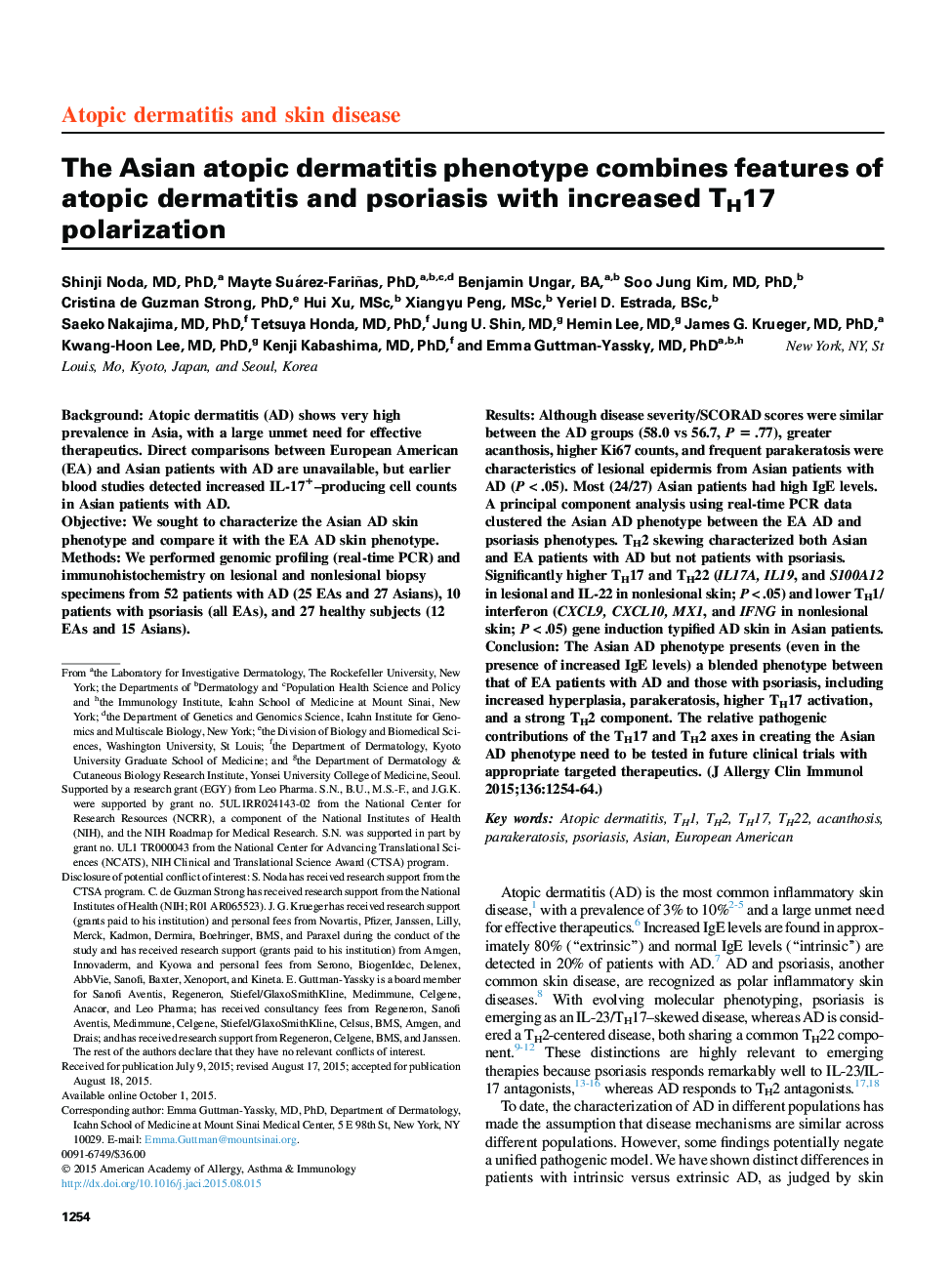| کد مقاله | کد نشریه | سال انتشار | مقاله انگلیسی | نسخه تمام متن |
|---|---|---|---|---|
| 6063234 | 1201849 | 2015 | 11 صفحه PDF | دانلود رایگان |

BackgroundAtopic dermatitis (AD) shows very high prevalence in Asia, with a large unmet need for effective therapeutics. Direct comparisons between European American (EA) and Asian patients with AD are unavailable, but earlier blood studies detected increased IL-17+-producing cell counts in Asian patients with AD.ObjectiveWe sought to characterize the Asian AD skin phenotype and compare it with the EA AD skin phenotype.MethodsWe performed genomic profiling (real-time PCR) and immunohistochemistry on lesional and nonlesional biopsy specimens from 52 patients with AD (25 EAs and 27 Asians), 10 patients with psoriasis (all EAs), and 27 healthy subjects (12 EAs and 15 Asians).ResultsAlthough disease severity/SCORAD scores were similar between the AD groups (58.0 vs 56.7, PÂ =Â .77), greater acanthosis, higher Ki67 counts, and frequent parakeratosis were characteristics of lesional epidermis from Asian patients with AD (PÂ <Â .05). Most (24/27) Asian patients had high IgE levels. AÂ principal component analysis using real-time PCR data clustered the Asian AD phenotype between the EA AD and psoriasis phenotypes. TH2 skewing characterized both Asian and EA patients with AD but not patients with psoriasis. Significantly higher TH17 and TH22 (IL17A, IL19, and S100A12 in lesional and IL-22 in nonlesional skin; PÂ <Â .05) and lower TH1/interferon (CXCL9, CXCL10, MX1, and IFNG in nonlesional skin; PÂ <Â .05) gene induction typified AD skin in Asian patients.ConclusionThe Asian AD phenotype presents (even in the presence of increased IgE levels) a blended phenotype between that of EA patients with AD and those with psoriasis, including increased hyperplasia, parakeratosis, higher TH17 activation, and a strong TH2 component. The relative pathogenic contributions of the TH17 and TH2 axes in creating the Asian AD phenotype need to be tested in future clinical trials with appropriate targeted therapeutics.
Journal: Journal of Allergy and Clinical Immunology - Volume 136, Issue 5, November 2015, Pages 1254-1264